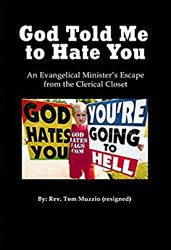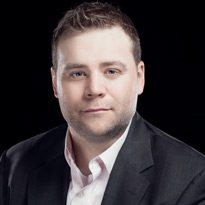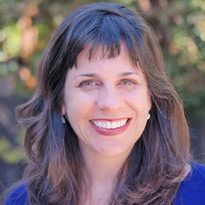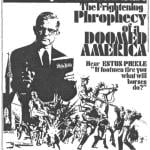“By “awakening” we mean that atheists and even agnostics are becoming more public about their secularism and are more interested in what can be called collective identity—forming a larger community, creating new organizations, and engaging in activism on a number of issues, such as pressing for stricter church-state separation.” — Richard Cimino and Christopher Smith, authors, Atheist Awakening
Now Featured at the Patheos Book Club
Atheist Awakening: Secular Activism and Community in America
by Richard Cimino and Christopher Smith
Q: You title your book Atheist Awakening, but is atheism really growing very much in the U.S.?
A: When you look at the percentage of people who self-identity as atheists, we really don’t find a sharp increase. The figure hovers at the 3 to 4 percent range. By “awakening” we mean that atheists and even agnostics are becoming more public about their secularism and are more interested in what can be called collective identity—forming a larger community, creating new organizations, and engaging in activism on a number of issues, such as pressing for stricter church-state separation.
Q: What led to this greater public and community involvement among atheists?
A: There is less stigma about publicly identifying as an atheist, although surveys continue to show that atheists, along with Muslims, are among the least popular groups in the U.S. But it may be the case that the stigma decreased as atheists—or “secularists” as we call them in the book— have become more public (“come out” as atheists, a term they borrow from the gay rights movement) and have become more organized. We covered one of the first public atheist rallies in Washington, DC in 2002, where only about 2,500 attended. When we attended the Reason Rally in Washington a decade later, there were over 10,000 attending. We find that secularists have become more public in opposition to the rising public influence of religion, particularly the religious right.
Q: What about the “new atheists,” people like best-selling authors Richard Dawkins, Sam Harris, and Christopher Hitchens? Has their more aggressive stance toward religion played some role in this phenomenon?
A: The new atheism has had a very influential role in organized secularism. We don’t think the new atheists have made many “converts” to atheism among believers, but their writings have had a tonic effect in encouraging and, in Dawkins’ phrase, “raising the consciousness” of non-believers. Prior to new atheism, the only presence in American popular culture was negative news coverage of American Atheists founder and atheist activistMadalyn Murray O’Hair.And, on the whole, historically speaking, interest in atheism has largely been expressed outside the cultural mainstream and within specialized academic, theological, and legal circles. The new atheist books, on the other hand—coupled with an institutional network of secularist publications, organizational newsletters, and various magazines through which the phenomenon was initially given shape—have propelled atheism into the public square.
Not only have numerous books by openly avowed atheists made best-seller lists for the first time in U.S. history, but there have also been films and TV shows with firm and explicit anti-religious sympathies and sentiments, such as Religulous and Family Guy. Our research consistently indicated the centrality of the new atheist books for secularists. Many of our respondents, for example, noted the powerful and important influence the books and authors had on both their atheist identity and activism. Although the books have been criticized quite strongly, what such critics miss is the function and role they play. Taken collectively the books represent a vernacular in which secularists may invent and imagine their identities, narratives, and traditions.
Q: Your book is all about organized secularism, but aren’t most atheists uninvolved in these groups and activism in general?
A: Yes, leaders of secular organizations regularly complain about how inactive many atheists are. But our idea of involvement doesn’t necessarily mean joining and regularly attending a group affiliated with American Atheists or the Council on Secular Humanism. It could mean participating in an online forum or have a Facebook page. One of the more noteworthy aspects of secular activism online is the fact that much of it is coming from the bottom up, from individual users not affiliated with any formal organization.
What is crucial is not that secularists online are advocating for change; secularist organizations have been doing this all along. But the significant thing is that they are advocating for change outside the avenues created for this purpose by the dominant secularist organizations, even as they build and draw on the work of such organizations. These new forms of online advocacy and activism, which we discuss in some detail in our book, have the potential to strengthen such organizations by pursuing actions parallel to their activities. Offline there has been a growth of a whole range of secularist groups—ranging from the fast-growing Campus Freethought Alliance to organizations focused on secular camping and secular parenting. There are even “atheist churches” emerging.
Q: What do these atheist organizations and churches do? They don’t believe in God or worship, so what is their purpose?
A: There is some division among secularists about the use of church-like services and rituals in general. A segment is so opposed to religion that they are dead set against talk of rituals and other controversial phrases like “secular spirituality.” But even a prominent new atheist such as Sam Harris has just come out with a book about the importance of developing spirituality without religion. What this all means, at least on the organizational level, is that there is more talk and practices about encourage feelings of wonder, joy, even transcendence (though in a non-supernatural sense). In our research, we found that many secularists do experience these emotions in relation to being in nature and making and enjoying the arts. As for rituals, such as rites-of-passage (birth, weddings, funerals), some secularist groups like the Unitarians, Ethical Culture, and the American Humanist Association have been doing this for a long time. Newer groups, like the Sunday Assembly, add rock music and atheist “testimonies” to the mix and are drawing crowds. As we also note in the book, even things like secularist rallies and atheist humor—think of the many outspoken atheist comedians, such as Bill Maher, Eddie Izzard and Julia Sweeney—or commemorations such as Darwin Day, have ritual dimensions.
Q: So what do you see as the future for atheism in the U.S.?
A: We think much of the future of the atheist movement will be determined by young adults. They form a generation that is less affiliated with religious groups than ever before in recent history. While there has been a sharp increase in non-affiliates (or the “nones”) in the U.S. population as a whole—up to 20 percent—that proportion is almost double among young adults. This is not to say that the majority of these young nones are atheists—the majority would be considered “spiritual but not religious.” Yet from being a movement of middle-aged or older white men, the secularist groups today have shown growth among young adults as well as women and some minorities. If more of the nones tilt secular, atheism may sustain its growth. But, then again, we find that atheist organizations and activism feeds off religious vitality and opposition. So a more secular America may not necessarily lead to growth in organized secularism.












